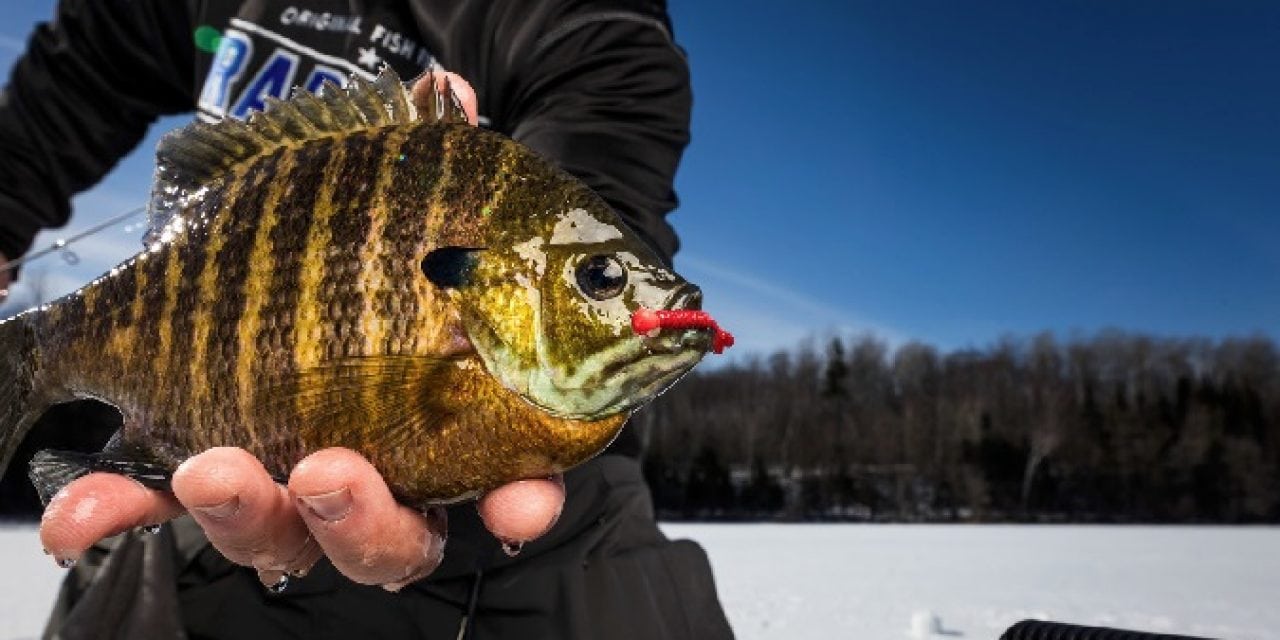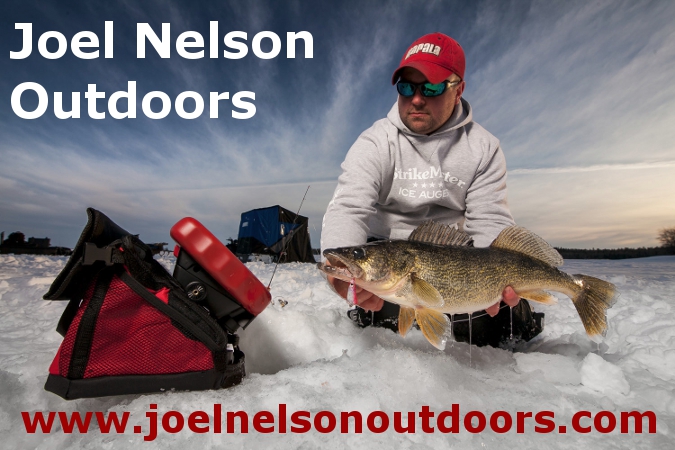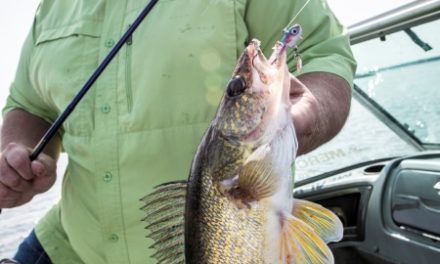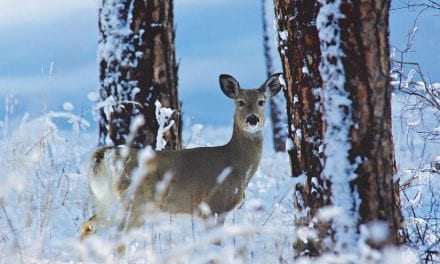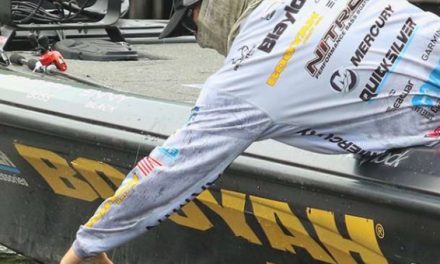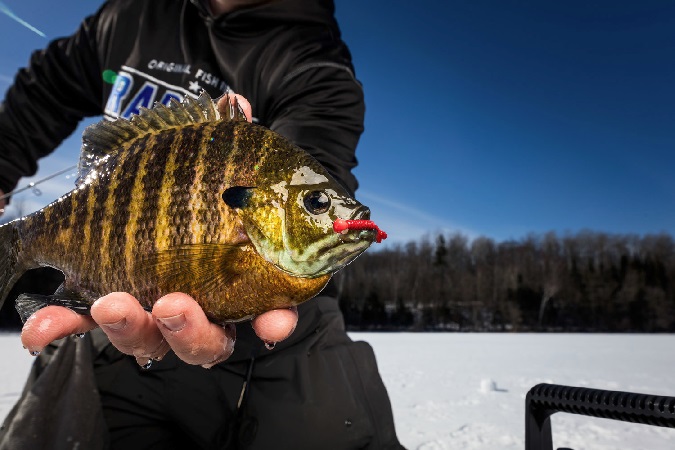
I write this with excitement for the oncoming late-ice period, where cold nights and warm days make fishing outside a true treat. We’ve gotten some warmer weather of late, which fuels the drive to be on a remote lake catching gills with no one else in sight. Of course, these bites can happen in plain sight on any local lake you call home, provided there’s some good gills to be had and great weeds to target them in.
Mid-winter sees some challenging fishing for all species, and with the way a bluegill can study a bait better than just about anything else, you’ve probably seen some tough bites with many fish marked and few caught. Moreover, you’ve also likely been finding your gills suspended or off of structural elements in water relatively deeper than you found them early ice. Loosely scattered mid-winter bluegills can be a really tough-go as they relate more to substrate that yields bugs than structure or cover we can more easily locate.
Everything changes however, as the sun angle grows steeper in mid-March. Melting snow and more light penetration into the shallows gets life going again. So does the meltwater from shore areas, cracks in the ice, and old holes. The lake goes from a previously sealed environment to something that becomes increasingly porous, letting in snacks along the way.
Throughout this process, you also have increased bug activity at depth. Perch and Tullibee anglers on the bigger waters will tell you that March is really good to them too, but in the waters you’re likely targeting quality gills, eventually the fish move away from those midwinter locations and focus their efforts shallow.
While I don’t know the exact reason, I suspect it has as much to do with the fact that weeds provide both cover AND food during this time of year. Anecdotal evidence for that has come in the form of some incredibly large predator catches over the years while targeting large gills. Some of the biggest and most bass I catch through the ice, and some of the most frustrating days donating mouth-jewelry to pike, come while targeting these shallow weedbeds.
Pike prowl and so do bass, and by doing so they can actually wreck a good thing in certain scenarios. Most often, you’ll catch gills on the edges, pockets, or inside turns of weedbeds until the commotion of your fish-catching attracts larger onlookers. They prowl, move through, disrupt the game for 10-15 minutes, and eventually you settle in to catching gills again. This process repeats indefinitely until you’ve sore-mouthed the predators enough or you move.
Typically I’m looking for the best weedbeds adjacent to deep-water chutes, inside turns, or steep breaks. A strong individual weedbed is far better than acres of the stuff, as the smaller the bed (within reason), the easier your job of targeting gills will be. In the shallows, if you’re facing a large bed, you’ll need lots of holes and will invariably spook panfish in the process. You’ll need time to let them settle down, hunt them by foot, and let the situation play out. This can be a time consuming process, so isolating humps or other rises with weeds near the deeper areas they previously suspended in front of can be a real key.
Of course not all weeds are created equal. You’re looking for cabbage, coontail, or a mix of the two in that order. At least from my experience, the good broadleaf stuff (cabbage) tends to be the main attraction, can form the smaller singular beds you’re hunting for, and will be easy to spot on electronics and underwater cameras.
Speaking of, this is where a good quality, portable underwater camera becomes more of a tool than a toy. Often with predators cruising and fish burying, the camera will determine your level of success for the day. Small differences in location, holes even 2 feet apart can be the difference in consistently getting bit and consistently not marking a target. I’ve seen gills hold tight to the weeds on camera too many times to consider it a coincidence. Learn what distance it takes to break that forcefield, and you’ll know the rest of the day how close you’ll really need to be to get them to commit.
Often, your flasher is rendered somewhat less useful here in terms of specific siting of your holes, as all of them will return weeds in water deeper than 8-10 feet or so. Still, once you’re dialed in, it’s the preferred method as camera cables, weeds, and predator fish means all kinds of untangling once a toothy critter or hungry bass eats your bait.
Keep in mind too that this progression from suspended or near-bottom deeper fish to the shallows happens differently in each lake. Some may have a great shallows bite for weeks, while others only give up those gems when the main-lake ice sheet has separated from shore and later. Knowing another place to hunt for them, and that it’s the place they’ll eventually end up has helped me do well on enough occasions to make it something I look forward to year after year.
The post The Weedbed Connection for Late-Ice Gills appeared first on ODU Magazine-North America’s #1 Digital Fishing Magazine.

